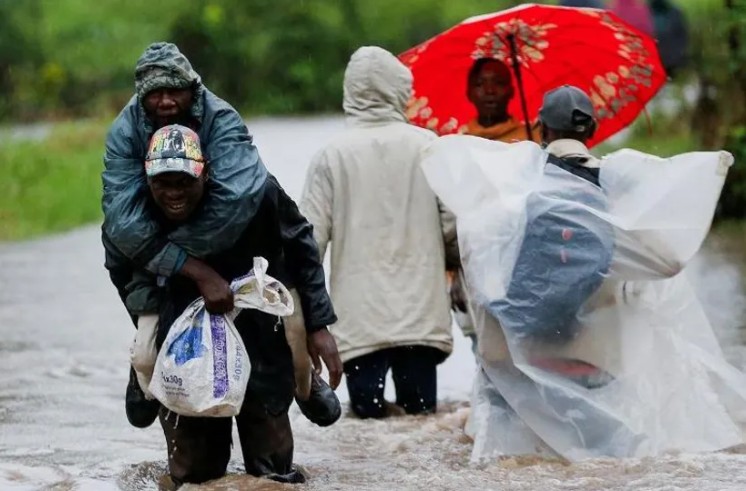Earth Day marked as global risks report warns of escalating environmental threats

This year’s Earth Day theme, ‘Our Power, Our Planet’, draws attention to the shared responsibility to protect the planet and the immense influence individuals, communities, and nations have in shaping a more sustainable future.
The world marks International Earth Day on April 22, a day dedicated to raising awareness of environmental conservation and sustainability.
However, a new survey warns that countries find themselves at a crossroads as they mark this annual event aimed at promoting the well-being of the planet.
More To Read
- Green economy now second-fastest global growth frontier, value hits Sh646.4 trillion - report
- COP30: Leaders endorse pledge to quadruple clean fuel use by 2035
- Why are so few environmental criminals on Interpol’s ‘most wanted' list?
- Garissa leaders oppose wildlife relocation, demand revival of dormant game reserves
- Cabinet unveils new pricing framework to curb infrastructure costs
- Jane Goodall, the gentle disrupter whose research on chimpanzees redefined what it meant to be human
The 2024–25 Global Risks Perception Survey by the World Economic Forum (WEF) cautions that countries face urgent threats to the planet’s health and must prepare for severe risks in both the short and long term.
The findings indicate that the most severe risks are primarily environmental, followed by technological, and then societal, in descending order of prevalence.
In the short term—defined as the next two years—the WEF identifies misinformation and disinformation, extreme weather events, and state-based armed conflict as the top three challenges facing countries globally.
It notes that the spread of false and manipulated information will continue to erode trust in institutions and disrupt democratic processes, while escalating climate events such as floods, wildfires, and storms will continue to strain disaster response systems and test human resilience.
Armed conflicts, meanwhile, are expected to threaten global stability and displace millions, further intensifying humanitarian and geopolitical crises.
Looking further ahead, over the next decade, the long-term risks are even more deeply rooted in environmental degradation.
Extreme weather events are forecast to remain the most pressing concern, followed by biodiversity loss and ecosystem collapse, highlighting the fragility of natural systems and the inextricable link between human survival and a healthy environment.
The third major long-term risk, according to the report, is critical change to Earth systems, including irreversible shifts in climate and biosphere patterns such as melting ice sheets or disruptions to ocean currents—changes that could trigger cascading and potentially catastrophic environmental impacts.
Inequality and pollution also remain significant threats, ranked among both the short-term and long-term risks.
This year’s Earth Day theme, ‘Our Power, Our Planet’, draws attention to the shared responsibility to protect the planet and the immense influence individuals, communities, and nations have in shaping a more sustainable future.
The WEF survey results serve as both a stark warning and a rallying call, as the path forward requires urgent and united action to address these growing threats.
How Earth Day began
On April 22, 1970, millions of Americans took to the streets, parks, and campuses in a nationwide protest against the environmental degradation afflicting the planet.
From halted traffic in New York to dramatic student demonstrations in Boston, the mass mobilisation marked a turning point in public awareness.
Driven by mounting concerns over pollution, oil spills, and unchecked industrial growth, an estimated 20 million people—roughly 10 per cent of the US population at the time—joined the call for change, in what is now recognised as the birth of the modern environmental movement.
The impact was swift and significant. By the end of 1970, the US government had established the Environmental Protection Agency and enacted landmark legislation, including the Clean Air Act and the Occupational Safety and Health Act.
Earth Day’s influence continued to grow, going global in 1990 when 200 million people across 141 countries came together in support of recycling and sustainability initiatives.
That momentum helped pave the way for the 1992 Earth Summit in Rio de Janeiro, Brazil, cementing Earth Day’s legacy as a driving force for international environmental action.
Top Stories Today
















































